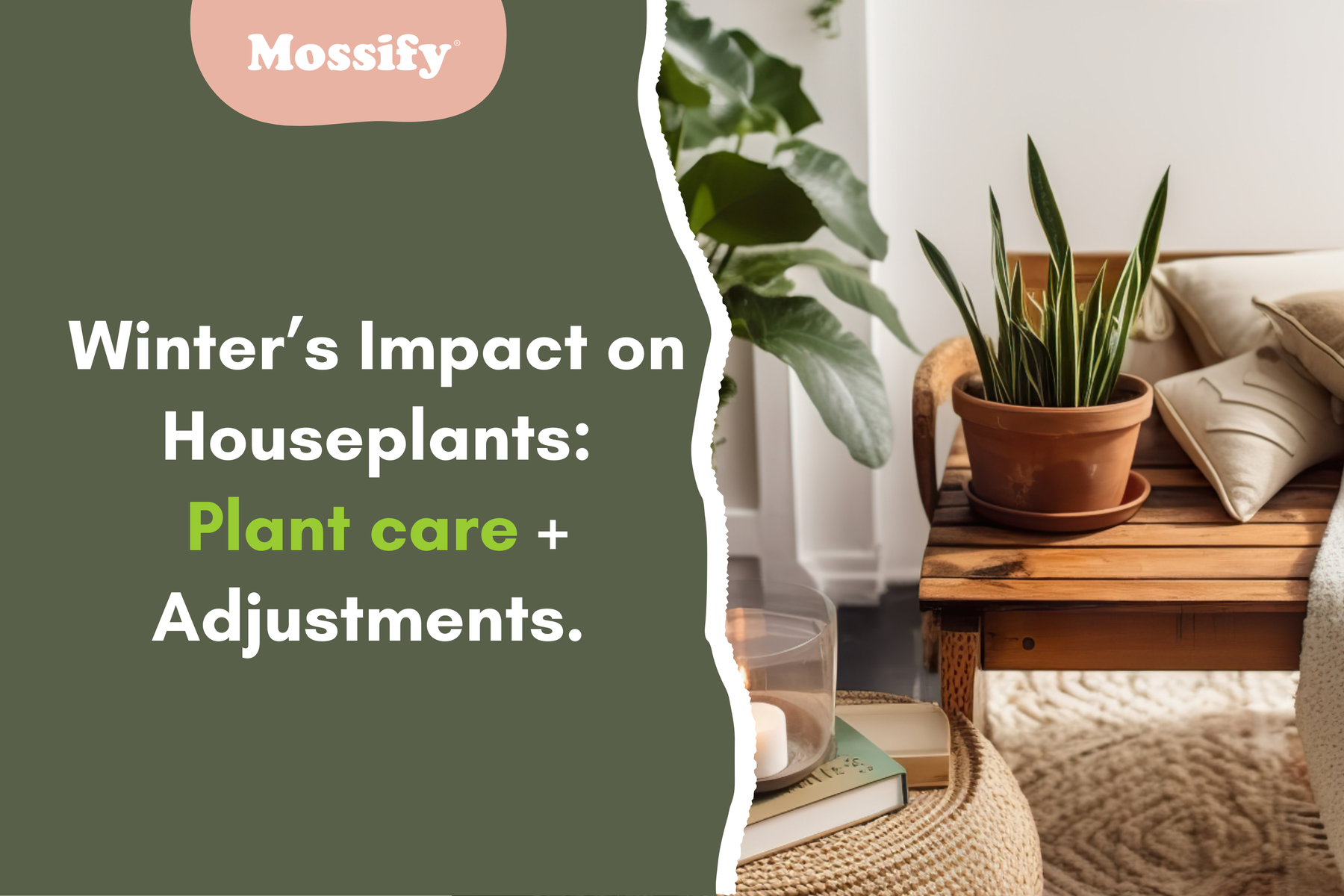With over 300,000 happy plants.
Over 300,000 happy plants

Winter brings in a lot of challenges for houseplants, including reduced sunlight, drier air, and fluctuating temperatures. As plants transition to survival mode, their care needs shift dramatically.
This guide dives into the science of how winter affects houseplants and offers detailed, actionable advice to keep them thriving all season long.
Part 1: How Winter Changes Plant Care Needs
Light is the engine behind photosynthesis, the process by which plants convert sunlight into energy. During winter, the reduced hours of daylight and weaker sunlight significantly limit photosynthesis, leading to slower growth or dormancy. For tropical plants, accustomed to consistent light levels in their native habitats, this change can cause stress. Insufficient light triggers etiolation—a phenomenon where plants grow leggy, with elongated stems and small, pale leaves, in search of more light.
Scientific Insight:
Light intensity decreases dramatically in winter, often dropping below the 1,000-lux threshold required by many houseplants. Tropical species like monstera and philodendron typically thrive in 2,000–10,000 lux.
How to Help:
With slower metabolic activity in winter, plants require less water. Overwatering is one of the most common mistakes during this season, as it can lead to root rot caused by oxygen deprivation and fungal growth. Conversely, under-watering is also risky, especially in homes with low humidity.
Scientific Insight:
Water absorption is regulated by transpiration, which decreases in drier air and lower light conditions. Overwatering disrupts the delicate balance of oxygen and moisture in the root zone, while under-watering stresses the plant, making it more susceptible to pests.
How to Help:
Indoor heating drastically lowers humidity levels, often to below 30%, whereas most houseplants prefer 40–60%. Low humidity can cause browning leaf edges, curling leaves, and stunted growth.
Scientific Insight:
Plants lose water through transpiration. In dry air, this process accelerates, leading to dehydration. Many tropical plants, like ferns and calatheas, rely on high ambient moisture to maintain turgor pressure in their cells, which keeps leaves firm and upright.
How to Help:
Houseplants are sensitive to sudden temperature changes. Fluctuating temperatures, such as those caused by cold drafts or proximity to heating vents, can stress plants, leading to wilting or leaf drop.
Scientific Insight:
Tropical plants thrive in temperatures between 65–75°F (18–24°C). Temperatures below 50°F (10°C) can damage cell walls, causing irreversible harm, while excess heat can dehydrate plants rapidly.
How to Help:
Part 2: Seasonal Adjustments for Winter Plant Care
Plants slow their growth during winter, reducing their need for additional nutrients. Over-fertilizing during this time can lead to salt buildup in the soil, which can harm roots.
Scientific Insight:
Dormant plants enter a phase of minimal nutrient absorption. Excess fertilizer can disrupt soil pH and osmotic balance, potentially burning roots.
How to Help:
Dust on leaves blocks light absorption, reducing photosynthesis efficiency. During winter, when light is already limited, this can exacerbate the plant's struggle for survival.
Scientific Insight:
Leaves have stomata—tiny pores used for gas exchange. Dust can clog these pores, hindering the plant's ability to “breathe” and regulate water loss.
How to Help:
Pruning dead or damaged leaves helps redirect the plant's energy toward healthy growth and prevents the spread of disease.
Scientific Insight:
Dead leaves can become a breeding ground for pests and pathogens. Pruning reduces the risk of infestation and improves overall plant hygiene.
How to Help:
Winter is a period of dormancy for most houseplants, making it a less-than-ideal time for repotting. The stress of repotting can disrupt a plant’s equilibrium.
Scientific Insight:
Roots grow slowly during winter. Repotting during this period can expose them to pathogens or disrupt their ability to absorb nutrients and water effectively.
How to Help:
Conclusion
Caring for houseplants in winter requires an understanding of how environmental changes affect their physiology. By adjusting light, water, humidity, and temperature, you can provide optimal care during the colder months. Keep your plants dust-free, avoid over-fertilizing, and resist unnecessary repotting to ensure they remain healthy and vibrant.
Happy Growing!
Leave a comment